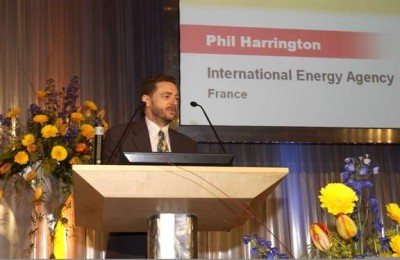Politicians appear to have lost direction. Phil Harrington has some climate change policy ideas that should keep Tasmania’s politicians occupied for the rest of their careers—and beyond. [25 August 2009 | Peter Boyer]
At a certain age, it’s said, nostalgia kicks in and you start thinking everything’s going to the dogs. I don’t know if it’s happening to me, but I keep thinking that politics wasn’t always like it is now — a displacement activity for people with attention-deficit disorder.
Whichever Australian capital you choose, we’re constantly confronted with politicians desperately seeking exposure on the airwaves, media events designed to score points over opponents, invented slights leading to phoney anger, and mindless mind-games with the quaint title of question time.
Our politicians would argue that they personally are above “playing politics” and will attend to policy when given breathing space by their opponents, but I fear the malaise is much worse than that. Worst of all, they’re missing signals from “out there” that we desperately need them to hear.
Slowly, steadily, people in local communities have been coming together to try to get their heads around what needs to be done to address climate change, and then they’ve started to do it. It’s a tough task that involves changing the living patterns of several generations, but it’s showing no signs of stopping.
Aiding this push has been a dedicated band pursuing a supremely important cause. I’ve mentioned some of them over the years: Margaret and her people at Sustainable Living Tasmania, Jenny and Hannah from the Source Wholefoods, schoolteachers like Corey, doctors like Nick… the list is far too big to fill out here.
Most such work is unpaid, though sometimes the personal passion fits with paid employment. Whatever, the task is so vast and the demand for these skills so great that these people can expect to be more than fully occupied as long as their stamina and their other lives allow.
One who has managed to combine career with personal convictions is Phil Harrington, senior climate change consultant with Pitt and Sherry, a Tasmanian-based engineering, building and scientific consultancy company.
Since he joined Pitt and Sherry early last year, Phil has gone well beyond the call of duty to help people in high places understand the climate challenge, lobbying throughout Tasmania and in other Australian centres to raise its profile and articulate the actions needed to address it.
Phil’s career in the politics and business of climate change has involved dealing with people at the upper end of the salary scale, in Tasmania, Canberra and other Australian capitals, and on the world scene.
Strongly influenced by British economist E.F. Schumacher (author of Small is Beautiful) and the 1987 UN report, Our Common Future, as a public servant Phil gravitated naturally to sustainability issues. Between two three-year stints in Paris with the OECD and the International Energy Agency, he helped formulate greenhouse and energy policy for the Australian government from the mid-1990s until 2001.
But his career has taken a new turn since his return to Tasmania. Employment in the private sector ended his formal public service career but began another kind of public service, mixing private consultancy work with voluntary participation in community efforts to address climate change.
Phil Harrington is a skilled communicator with a potent message to Tasmanians, honed during two decades of work in energy and sustainability policy. It’s this: climate change and peak oil are going to bring massive change to Tasmania whether we like it or not, but a determined, focused effort can bring us rich rewards in the form of a better, more sustainable life on this island.
Tasmania, he says, must set a target to be free of fossil-fuel emissions, creating new investment and jobs while improving the lives of its citizens. We should aim high, because nothing less will do. That task should pretty well fill out the remaining careers of our politicians, leaving no time for petty personal bickering.
Phil Harrington’s ten strategies for an emissions-free Tasmania
Strategy 1: Use less energy through efficiency gains (involving a major retrofit program) and conservation.
Strategy 2: Adopt all-renewable, distributed electricity system including rooftop PV, small scale wind, community-corporate wind turbines, optimised hydro system and geothermal power.
Strategy 3: Urgently address transport energy, with initial focus on transition fuels but aiming for all-electric cars, trucks, buses and trains.
Strategy 4: Through the planning system, encourage compact, walkable, liveable cities and towns.
Strategy 5: Develop public and low-carbon transport through major investment in bus, cycling and walking networks.
Strategy 6: Develop local food production to dramatically cut ‘food miles’.
Strategy 7: Improve resource recovery and waste management, providing appropriate infrastructure for separation, processing and reuse.
Strategy 8: ‘Engineer out’ industrial greenhouse emissions, sector by sector, company by company.
Strategy 9: Through public education, change behavioural culture to stop wasteful consumption.
Strategy 10: Get cracking!

